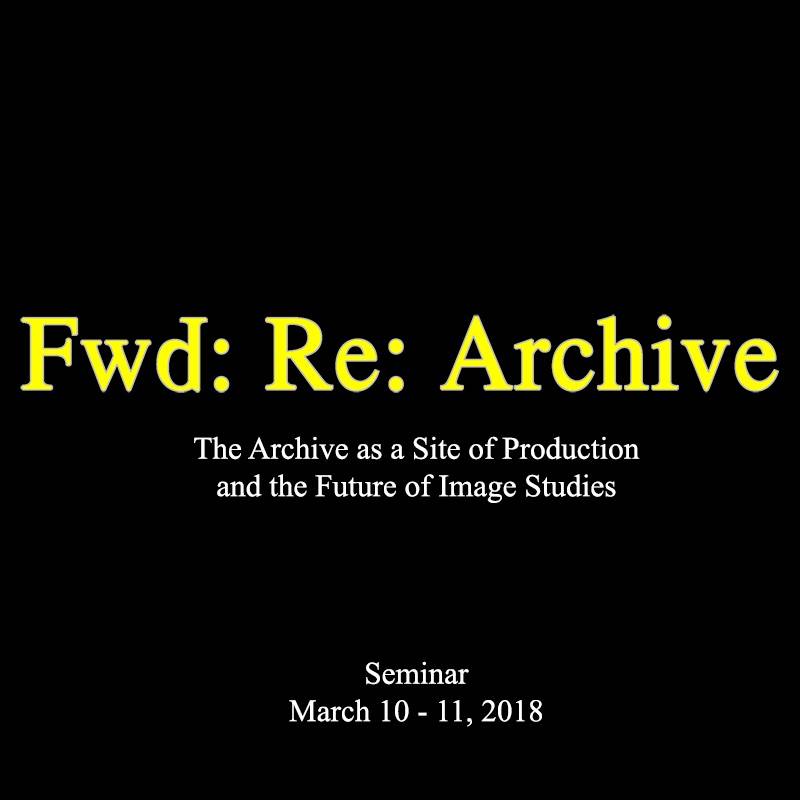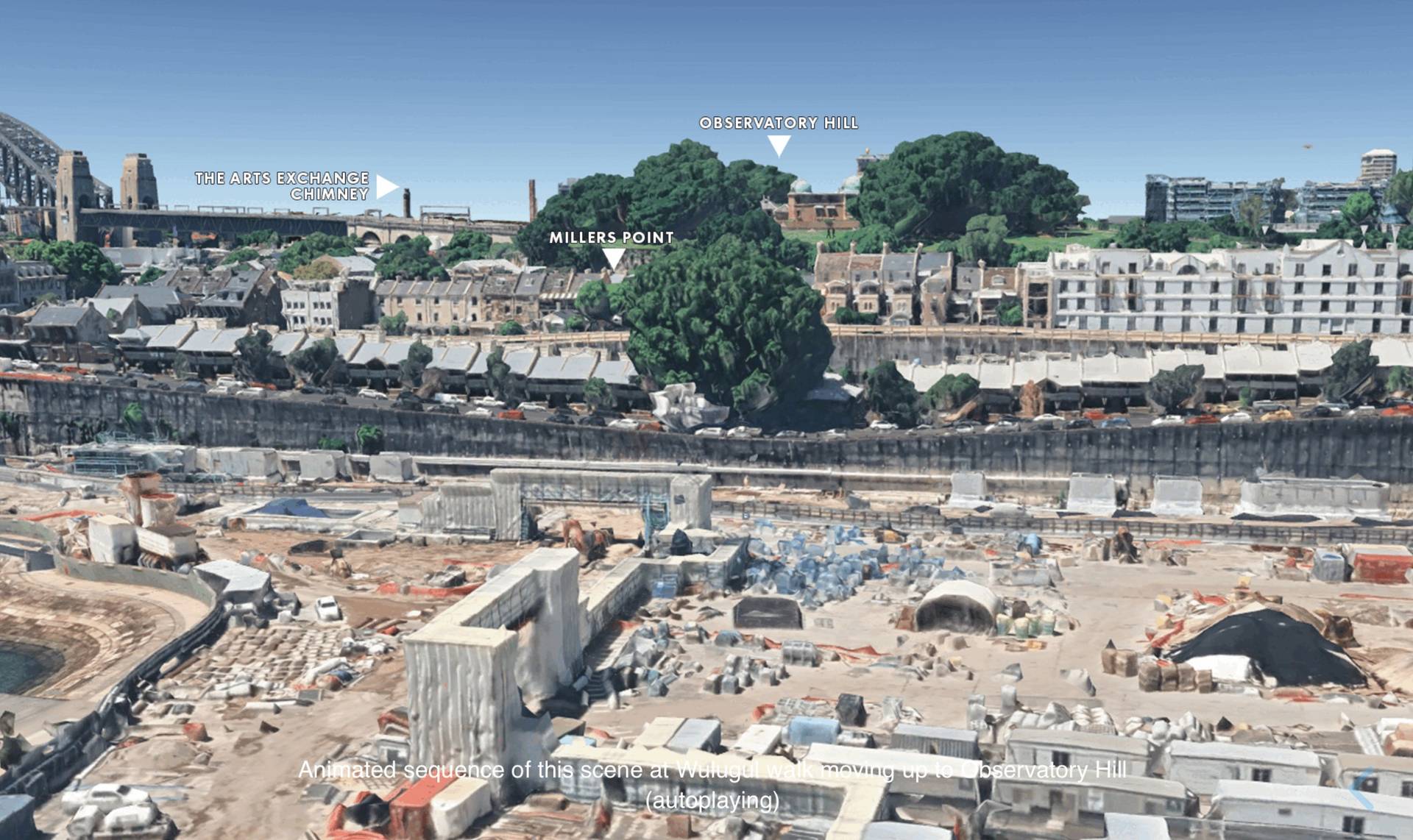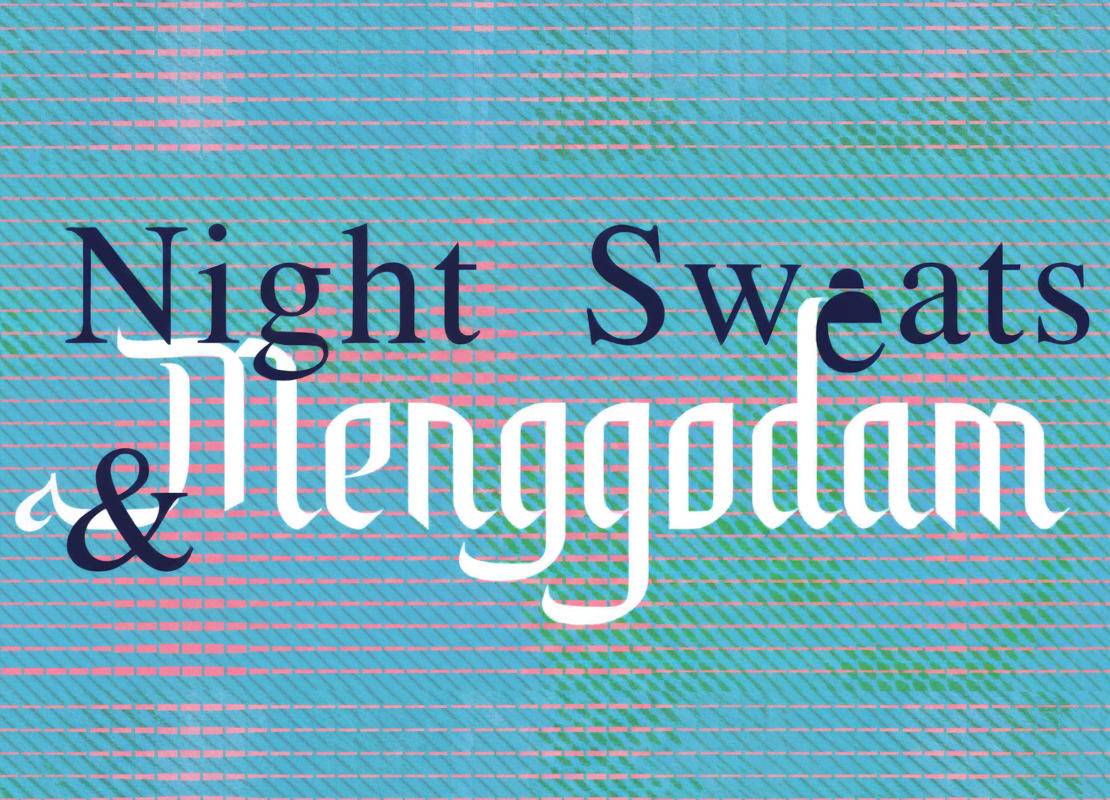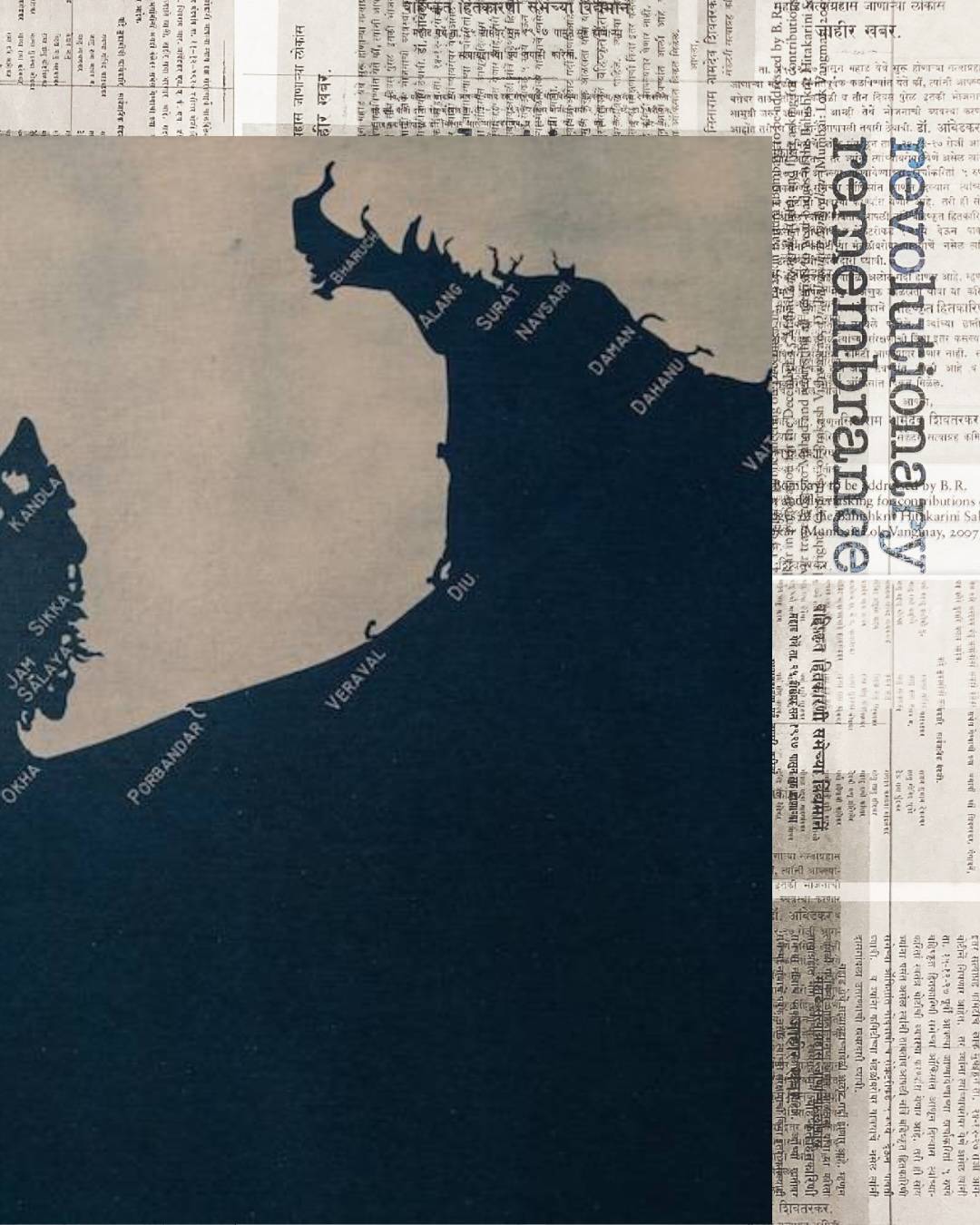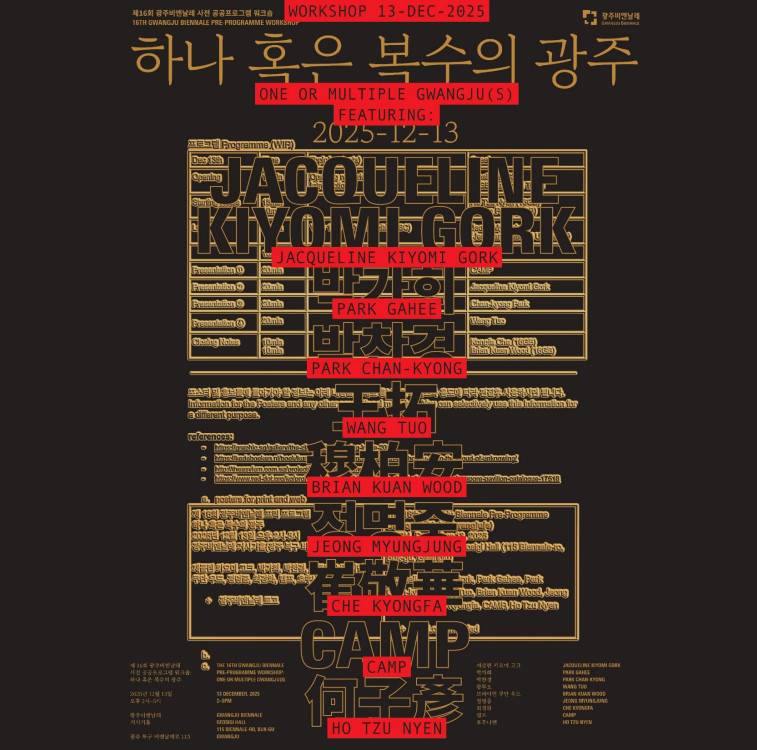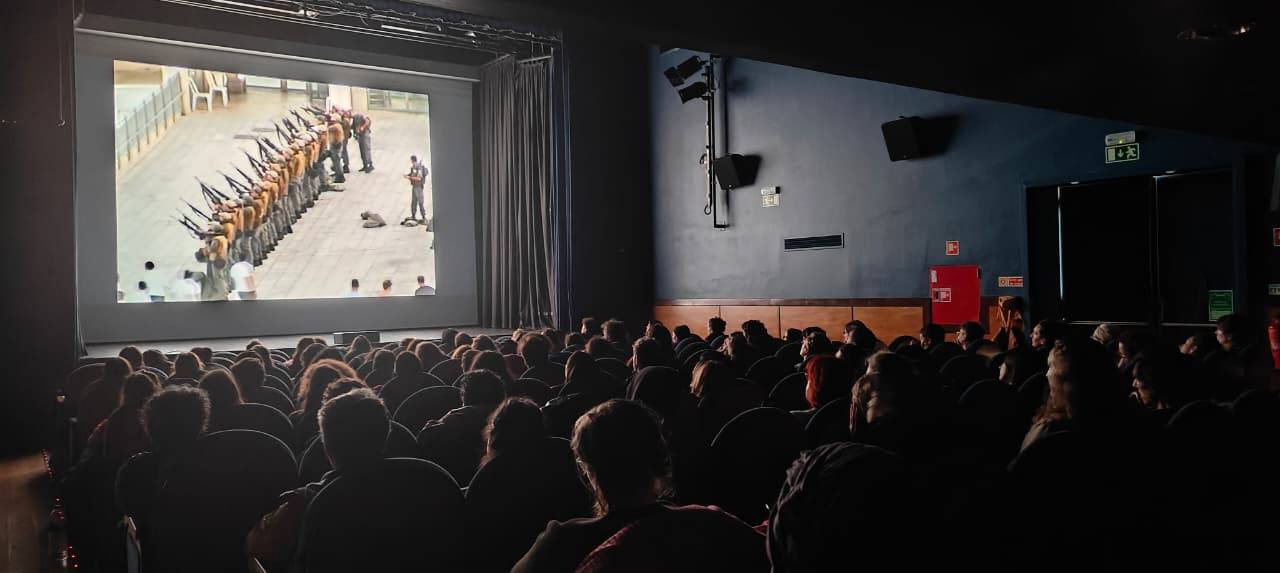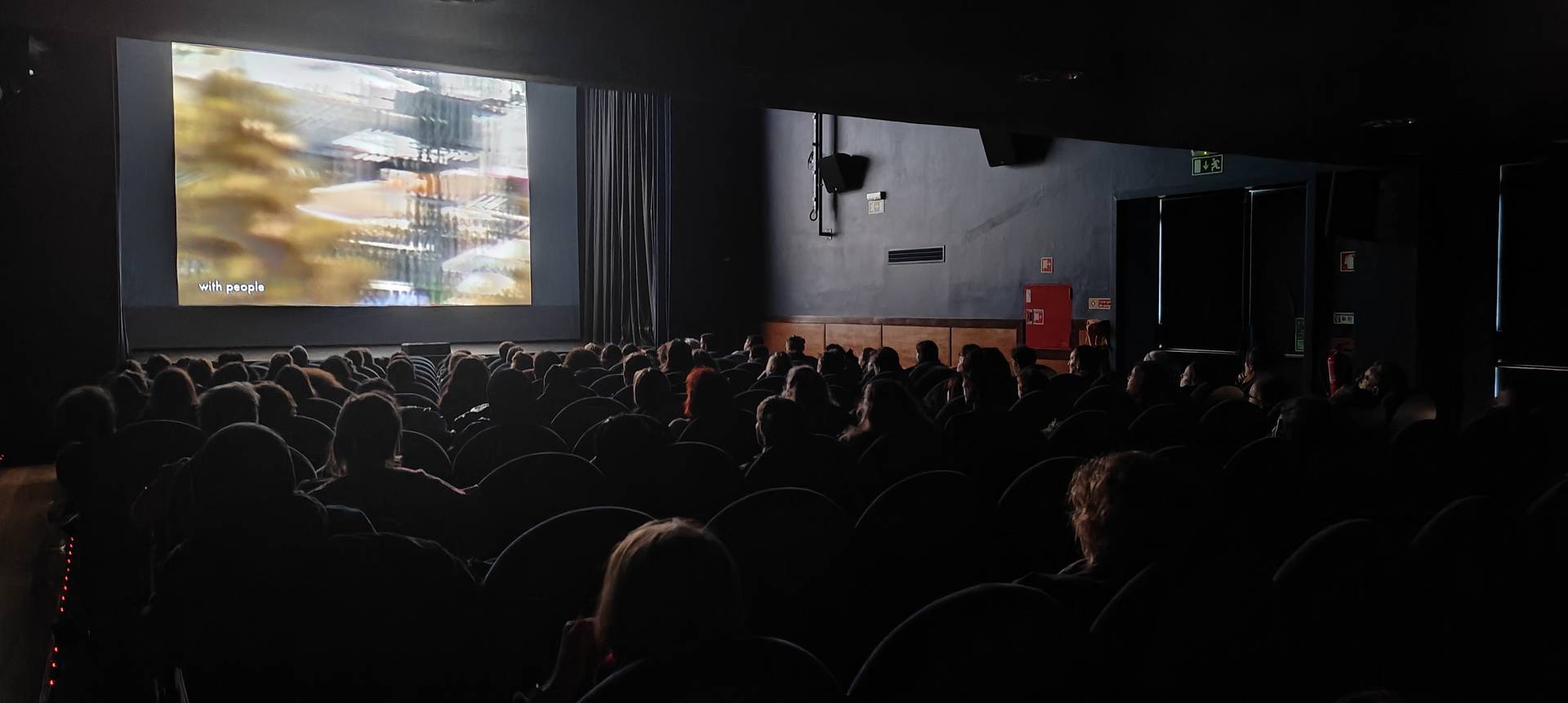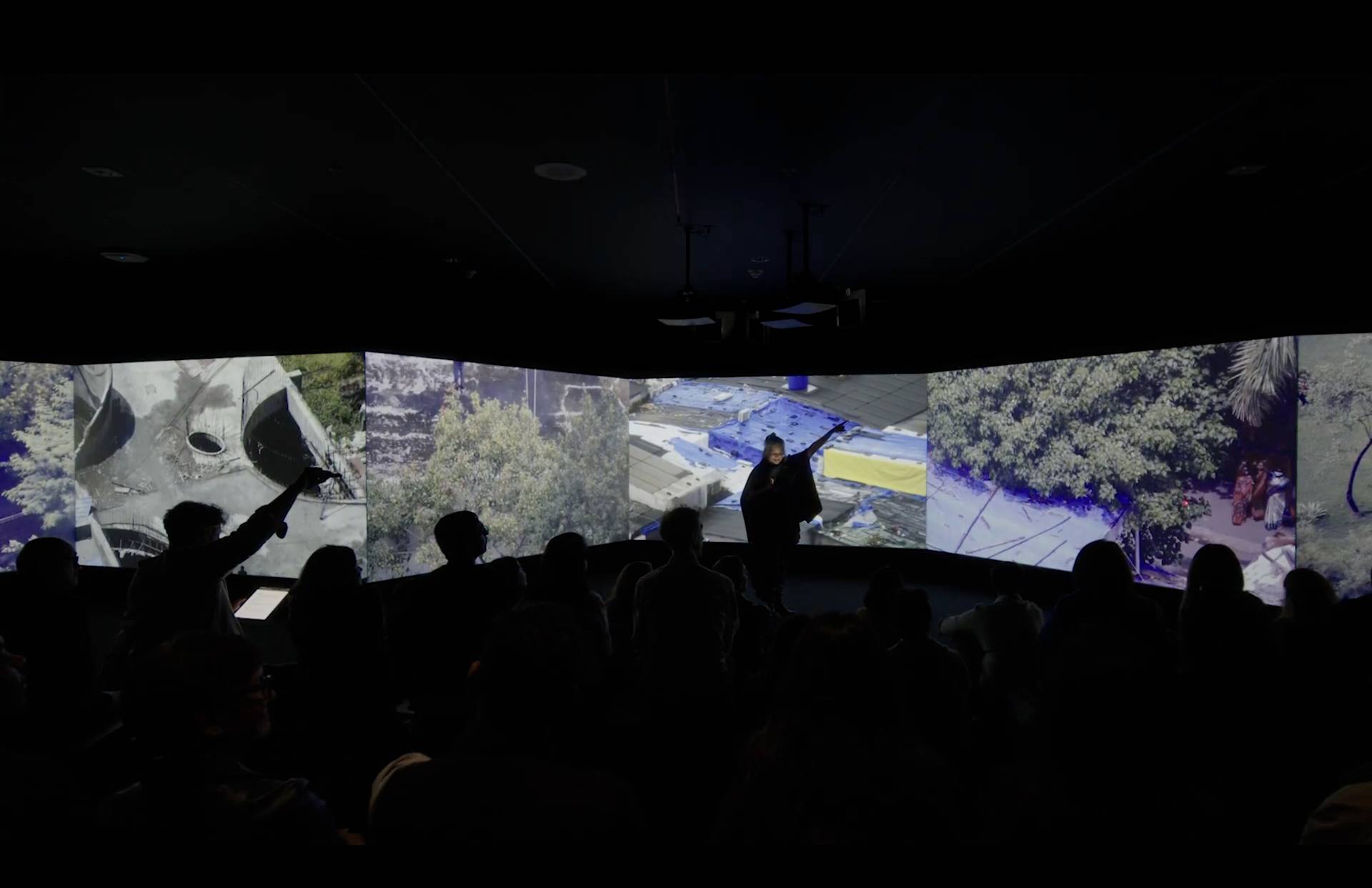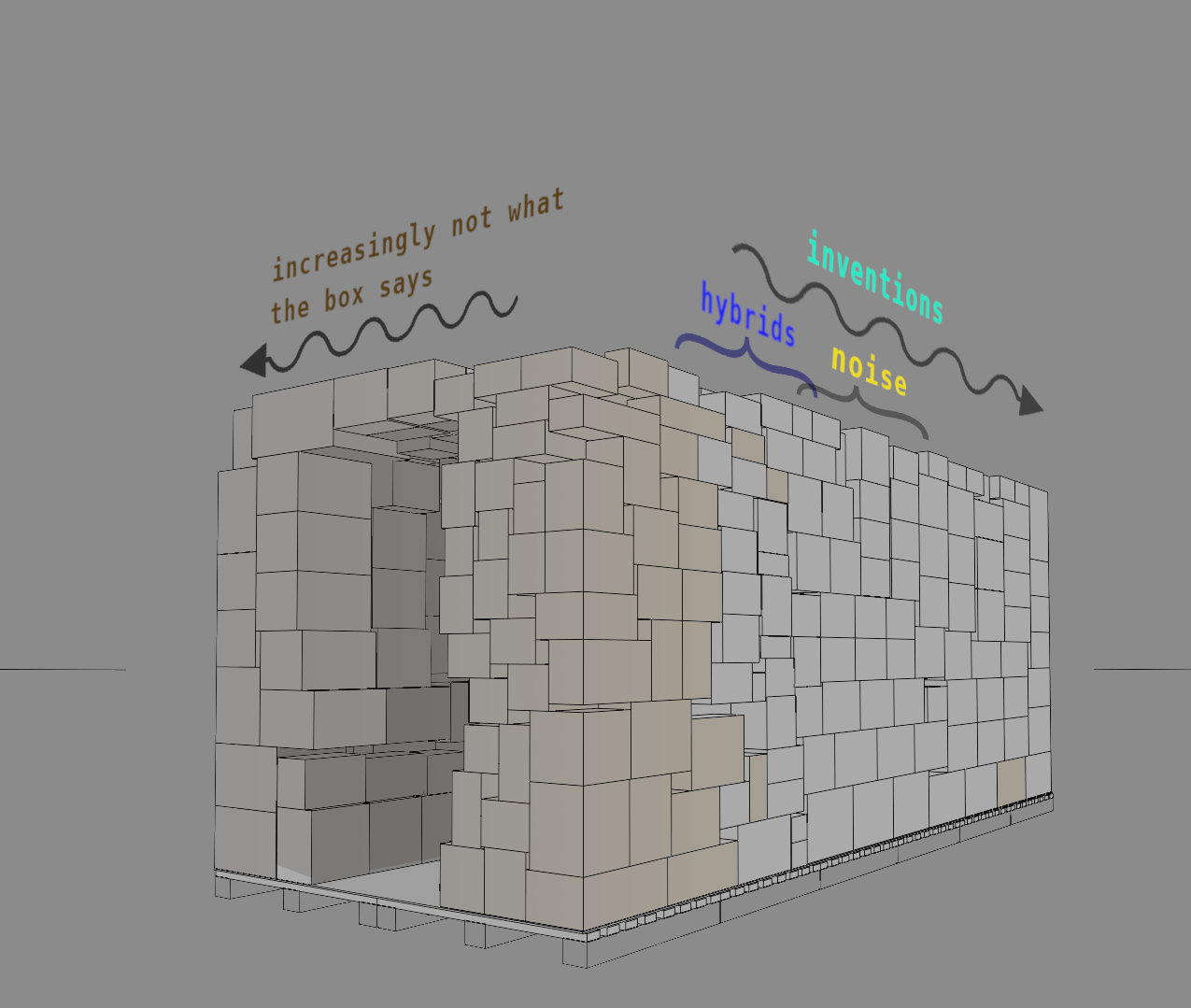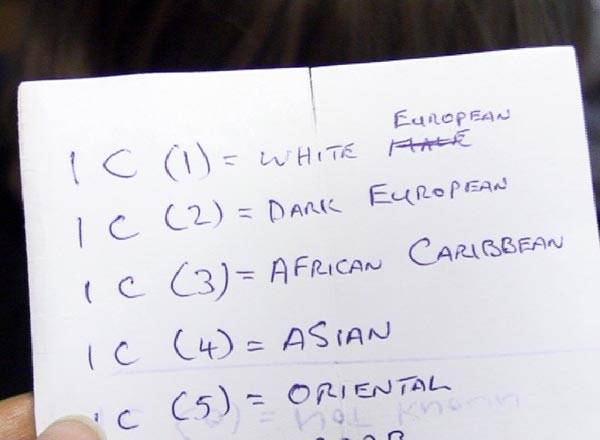
Pad.ma 2009
Feb. 16, 2009 - Feb. 17, 2009
Day:
Monday, February, 16, 2009.
Time:
11:am to 7pm
Location:
"Who Are We?" hall - inside the Discovery of India exhibition,
First Floor,
Nehru Centre,
Dr. Annie Besant Road,
Worli, Mumbai - 400018.
(See schedule of speakers
here. And A REPORT here.)
We take great pleasure in inviting you to a day-long engagement with Pad.ma.
For
the past year, we (Oil21 from Berlin, the Alternative Law Forum from
Bangalore, and three organisations from Bombay: Majlis, Point of View
and ChitraKarKhana/CAMP) have been working on various aspects of the
online archive, http://pad.ma. At the moment Pad.ma contains some 150 hours of video and over 100,000 annotations (text entries).
In its traditional function as an archive, we see Pad.ma as a way of opening up images, meanings
and effects that are present in video footage and at the time of its shooting. These are resources that conventions of editing and viewing moving images have tended
to suppress.
At the same time, Pad.ma responds to the invitation and challenge
of a landscape beyond "the film" as the desired end-product of this
medium, and beyond youtube as its default online repository.
Filmmakers and others are already engaged in many forms of
presentation, interpretation, and the combination of images and ideas.
Pad.ma suggests some specific new relations between images and text,
production and commentary, and online and offline. It proposes a few new ways to write about and discuss
documentary film practice, ways to base academic work on video sources,
and more generally, ways to still care for something that has become
"democratic". All of these claims, ofcourse, will be tested in
Pad.ma's new phase.
In March this year, Pad.ma will be opened up to external
contributions. As a lead-up to this, we invited a number of "users":
independent filmmakers, artists, activists, researchers, students, scholars, and enthusiasts
to contribute their own material into pad.ma, or traverse the archive and explore its ways.
On the 16th of February, we are having a day-long series of
presentations and discussions with this group. We hope you will join us
and take part, to understand the activities over the past year, and to
help us plan the road ahead.
with love,
pad.ma group:
altlawforum.org
camputer.org
majlisbombay.org
oil21.org
pointofview.org
Speakers:
Aagaaz is a voluntary youth group whose members come from PremNagar, Meghwadi and SanjayNagar bastis of Jogeshwari, Mumbai from diverse religious and caste backgrounds. They function as a youth development center and and organise camps on education, health, employment, personal development and projects around local infrastructures such as water and rationing (PDS). They are supported entirely by local contributions.
The pad.ma presentation is by Shaali Shaikh, Durga Gudillu and Ismail Sharif, Hakim Liliyawala and Ajeet Mahale.
Nilanjan Bhattacharya is a Calcutta based filmmaker who has been making documentaries for the last 14 years. In 2005 he received the National Film Award for his documentary, Under This Sun. He is now working on the indigenous food culture in India. Nilanjan is the initiator and project director of the "Interpretative Interactive Archive on Calcutta".
Desire Machine Collective. Mriganka Madhukailya and Sonal Jain are co-founders of Desire Machine collective, an ensemble of practitioners working predominantly with new media, video and photography. They have recently initiated the artists-space Periferry, on a boat on the Brahmaputra.
Ghar Bachao Ghar Banao Andolan: A social movement of slum dwellers and unorganised sector workers-hawkers. The Andolan was initiated to challenge the inhuman and unconstitutional demolitions of more than 75,000 houses by the Government of Maharashtra in 2004. The movement, under the leadership of women believes in the dual approach of Sangharsh aur Navnirman and adopts non-violence as a value framework.The Andolan is affliated with NAPM (National Alliance of People's Movements).
The pad.ma presentation is by Simpreet Singh, a Production Engineer and TISS post-graduate who has been working full-time with the GBGB Andolan since 2005 and Ruchi Kumar, a second-year student of Tata Institute of Social Sciences who is doing her field work with the Andolan.
Sanjay Kak is an award winning documentary film-maker based in New Delhi. His recent film the feature length Jashn-e-Azadi (How we celebrate freedom, 2007) made extensive use of anonymous archival material from Kashmir.
Priya Sen mainly works with non-fictional and experimental genres of video, photo, sound and writing. She is currently with Sarai-CSDS, New Delhi where she works as a researcher-practitioner of experimental media with the Cybermohalla project - a network of media practitioners and writers in working class localities in Delhi- as well as with the Sarai Media Lab.
Kaushik Bhaumik programs films at Osian's-Connoisseurs of Art. He is co-editor of the recently published Visual Sense: a Cultural Reader published by Berg, Oxford. His monograph on early Indian cinema is forthcoming this year from Clarendon Press, Oxford.
Sadanand Menon is a reputed arts editor, teacher of 'cultural journalism', a widely published photographer, curator, writer and speaker on politics, ecology and the arts, and is Adjunct Faculty at the Asian College of Journalism, Chennai. A long-time collaborator of the dancer Chandralekha, he is currently in the process of setting up a publicly accessible archive of her work.
Ranu Ghosh is a film director and cinematographer based at Calcutta working in video and celluloid for the last ten years. She has done a number of national and international projects as a producer, cinematographer and researcher.
Nida Ghouse born in 1982, works in Cairo and Bombay.
Ayisha Abraham is an artist who has been increasingly researching and working with 8 mm found footage, including the film series "Straight 8". She is a member of the Bangalore artists collective, BAR1 and works as a visual arts consultant at the Srishti School of Art, Design and Technology.
Lawrence Liang is a researcher and writer. He is one of the founders of the Alternative Law Forum, Bangalore, and has been writing extensively on issues of law and culture, intellectual property and censorship. He is the author of A Guide to Open Content Licenses (Piet Zwart, 2005), and Sex, Laws and Videotape: The Public is Watching (PSBT, 2007). He is on the Board of the iCommons, and the Center for Internet and Society, and is currently working on a book on law and justice in indian cinema.
Sebastian Lütgert and Jan Gerber are the software developers of pad.ma. They are initiators of a number of projects on intellectual property, cinema and the internet, including the cinema archive 0xdb.org, the Oil21 project, and Pirate Cinema.
Shaina Anand is a filmmaker, artist and co-initiator of the pad.ma project.
Report
Report on Pad.ma 2009 Event.
On the 16th of February 2009, we officially opened out Pad.ma to the general public, and as a part of the launch we had a stimulating day-long event with various people who have been engaging with pad.ma. This report attempts to capture a sense of the day, as well as some of the questions and concerns that were raised. We were very excited by the range of responses, and ways in which people had used pad.ma in interpreting their own footage, revisiting their earlier work or annotating archived material, as well as the newer ways in which pad.ma were revealed for us through its use by this new set of participants.
Shaina Anand began the day by providing a background to pad.ma, and how the various organizations involved (Oil21 from Berlin, Alternative Law Forum, Bangalore, and three organizations from Bombay: Majlis, Point of View and ChitraKarKhana/CAMP) came together to conceptualize pad.ma. In its one year of making, pad.ma has already included over 150 "events" from Majlis's Godaam archive, Chitrakarkhana's collection of micro media and other contributions including that of Point of View, Alternative Law Forum and footage by filmmakers such at T. Jayashree and Saeed Mirza. Shaina said that the main reason for this day was to get a sense of how people from different disciplinary backgrounds from film makers to artists, and scholars to activists could use pad.ma to explore the relationship between text and image, to examine the possibilities that it opens up, and also to look at the blurring lines between those who produce images, those who interpret it, and those who are supposed to consume it.
The first presentation of the day was made by Aagaz, a voluntary youth group from PremNagar, Meghwadi and Sanjay Nagar bastis of Jogeshwari. Members of Aagaz including Shaali Shaikh, Durga Gudillu and Ismail Sharif spoke about the recent use of video in their work. About 15 hours of footage from their video project Ek Dozen Pani was collaboratively annotated to describe some relationships between infrastructure, water and the city. While infrastructure is hyper visible in most cities in diverse forms, from the rapidly changing built environment to decaying pipes from which water leaks to poorer neighborhoods, the members of Aagaz used the layers of annotation in pad.ma to go deep into their own histories of how infrastructure gets to be made and unmade in urban experience. <a href="http://pad.ma/find?l=Lj">http://pad.ma/find?l=Lj</a>
Sanjay Kak spoke about his own relationship to found footage after the experience of making the film Jashn-e-Azadi, and he was invited to write over a two-hour long tape of found footage, "Flight over the CFL". In what can only be described as an ethnography of a media event, Sanjay Kak's reading of this film opens out for us the historical and analytical possibilities that lie in material which may seem completely ordinary and uneventful. Combining the skills of a film maker with that of the historian, Sanjay's contemporatry reading of the material opened out ways in which we can think the relationship between events, fragmentary material and contested political histories <a href="http://pad.ma/Vg92c17o/info">http://pad.ma/Vg92c17o/info</a>
Priya Sen, a film maker from Delhi revisited a film that she had made six years ago,"The Knower of Secrets" about Qawwali singers in Hazrat Nizamuddin. In her annotations, Priya looked at what it would mean to capture the experience of the film maker in the making of the film, an experience which is never exhausted by the end product that emerges in the form of the finished film. Her annotation moves between the personal, the affective, the theoretical and the analytical. On Pad.ma, the knower of secrets emerges as a text which opens out to different registers of experience and reflection which were not immediately available at the time of the making, or viewing, the film. <a href="http://pad.ma/Vu5mgs8w/info">http://pad.ma/Vu5mgs8w/info</a>
Nida Ghouse's presentation raised the critical question of the difference between seeing an image, reading an image and understanding the experience of pad.ma which attempts to bring text and image together. Nida located the development of the various versions of pad.ma and its implications for newer forms of reading that are made available. Finally, Nida looked at the idea of the electronic archive not just as an archeological site for data mining, but also as a construction site of ideas and possibilities.
Sebastian Lütgert and Jan Gerber made 10 remarks about video and the internet, balancing between the exhilaration about video on the net and the material realities of low bandwidth. They distinguished between open source as a 'cool attitude' and openness as a form of practice that constantly requires interventions that reframes the ways we think of our own practices. They also argued that licenses are 'real', in that issues of format of videos, inter-operability etc are all affected by proprietary licenses and the future of video on the net is also an issue about closed or open systems.
Kaushik Bhowmick was invited by pad.ma to be a guest annotator, and Kaushik took up the challenge by trawling through the archive and selecting ten events. But rather than choosing to annotate them through information or analysis of the events (which ranged from bar dancers to the item song in hindi films to the "lumpen audience"), Kaushik chose to read and write across them. Drawing from mythology and film theory, Kaushik chose to make poetic connections across images. Arguing that film eventually relies on the production of sensibilities, Kaushik's annotations sought to capture feelings and layers of the videos, and the ways they spoke to each other. <a href="http://pad.ma/Vejbx6uz/00:02:54.000">http://pad.ma/Vejbx6uz/00:02:54.000</a>
Desire Machine Collective from Guwahati chose to focus on the idea of the North East as it emerges in popular discourse and in the news media. They curated a set of items which provided a name and place to the idea of the north east. In their curation they sought to raise the question of how an idea like the Northeast comes into being, where it finds form in media discourse, and also ways in which a counter archive that displaces one central idea of the north east could emerge. They chose to work with one segment of a film Tango Charlie and its hugely stereotypical image of the north east and contrasted this with videos that looked at the Bnei Menashe, the lost tribes of Israel from Mizoram. ( http://pad.ma/find?l=Ll)
Lawrence Liang made a presentation on the relationship between the image, politics and the distribution of the sensible. Drawing form Jacques Ranciere, Lawrence argued that politics was already aesthetics, in that ideas of the political often draw from sensorial metaphors such as visibility and invisibility, and politics may consist of interruptions/interventions in the distribution of the sensible, which modify the aesthetico-political field. He tried to link this to an understanding of the political which is not dependent on a pre-determined political field, but which is open to redefinition through a reversal of assumptions of social roles. In the case of pad.ma, the blurring of the lines between image makers and image "readers" would constitute such an aesthetic-political interruption.
Ayisha Abraham who has made a film Straight 8 using found footage chose to look at rare films made on Ram Gopal, a dancer who became famous in the mid-twentieth century. Using the footage of Ram Gopal that had been shot by an amateur film maker Tom D'Aguiar, perhaps the only existing fragment of moving image of Ram, Ayesha posed questions about the relationship between the materiality of film, the role of archives and the reconstruction of histories through them. <a href="http://pad.ma/Vsnjewdj/info">http://pad.ma/Vsnjewdj/info</a>
Ranu Ghosh has been working on the changing urban landscape of Kolkata, looking at the emergence of new high rise apartments against the decaying landscape of factories that have shut down. In her presentation she spoke about the South City project which has emerged on the lands of the Usha sewing machine factory. She showed a film that documents struggle of an individual against the acquisition of his housing quarters, he was given a camera to document what was happening, since there are no visitors allowed inside the premises. <a href ="http://pad.ma/Vfsgvjes/info">http://pad.ma/Vfsgvjes/info</a>
Nilanjan Bhattacharya has been working on questions of traditional knowledge and biodiversity. He presented an interview with Madhav Gadgil and related Prof. Gadgils view points on rituals and superstitions and myths as essential to the maintaining of sacred forests and knowledge systems through footage from his older films that included exampled of buddhist, hindu and animist rituals. <a href="http://pad.ma/Vs6e8x5j/00:13:51.000">http://pad.ma/Vs6e8x5j/00:13:51.000</a>
Sadanand Menon showcased two films on the dancer Chandralekha. The first was part of a program made for a cultural show on Doordarshan, and the only footage available of it is the versions recorded from television. In an example of how text/image and histories (personal and public) interact, Sadanand's annotations on the Tanabana program take us through an intimate journey with Chandralekha. Moments that would otherwise be missed (a dog passing by, Chandra making rangoli), if we were just watching the film, are re-read by Sadanand to create a shared space where we begin to understand Chandra's philosophy of creativity and the body.
Ghar Bachao, Ghar Banao Andolan is an organization that has been working on housing rights, particularly against corporate privatization. They took an existing footage in pad.ma "A Day in the Life of Niranjan Hiranandani" and re-read it against information that they have been collection for a few years (through the use of RTI as well as investigative journalism). The grandiose vision of Hiranandani's construction business is read against the material conditions of housing for the poor, while his statements of corporate responsibility are read against the corrupt practices prevalent in the real estate industry, for example. In a playful manner, GBGB fills in certain narrative of images through sharp political satire. <a href="http://pad.ma/Vtowua9j/L2kv9">http://pad.ma/Vtowua9j/L2kv9</a>
Schedule
11:15 am. Shaina Anand
Where we are.
11: 30 am. Aagaaz.
Kuch Ilakon Mein Pani Ki Gehrayi.
12:00 Sanjay Kak.
Flight over the CFL.
12: 30 Priya Sen
The Knower of Secrets, a film revisited.
1:00 Nida Ghouse.
Reading Pad.ma: a few observations on images and text in digital archives.
Discussion.
13:30 Lunch break
14:30
Sebastian Lütgert and Jan Gerber.
10 things about video on the internet in 2009
15:00 GBGB Andolan.
Replaying Hiranandani
15:30 Desire Machine Collective.
Name, Place: North East
16:00 Kaushik Bhaumik
Narratives in Trouble: Public Impulses and Private Desires
16: 30 Lawrence Liang
Image, Politics, and the Distribution of the Sensible
Discussion.
17:00 Tea Break
17: 30 Ayisha Abraham
Ram Gopal
17:50 Ranu Ghosh
18:10 Nilanjan Bhatacharya
18:30 Sadanand Menon.
From Chandralekha's archive.
19:00 Closing discussion

